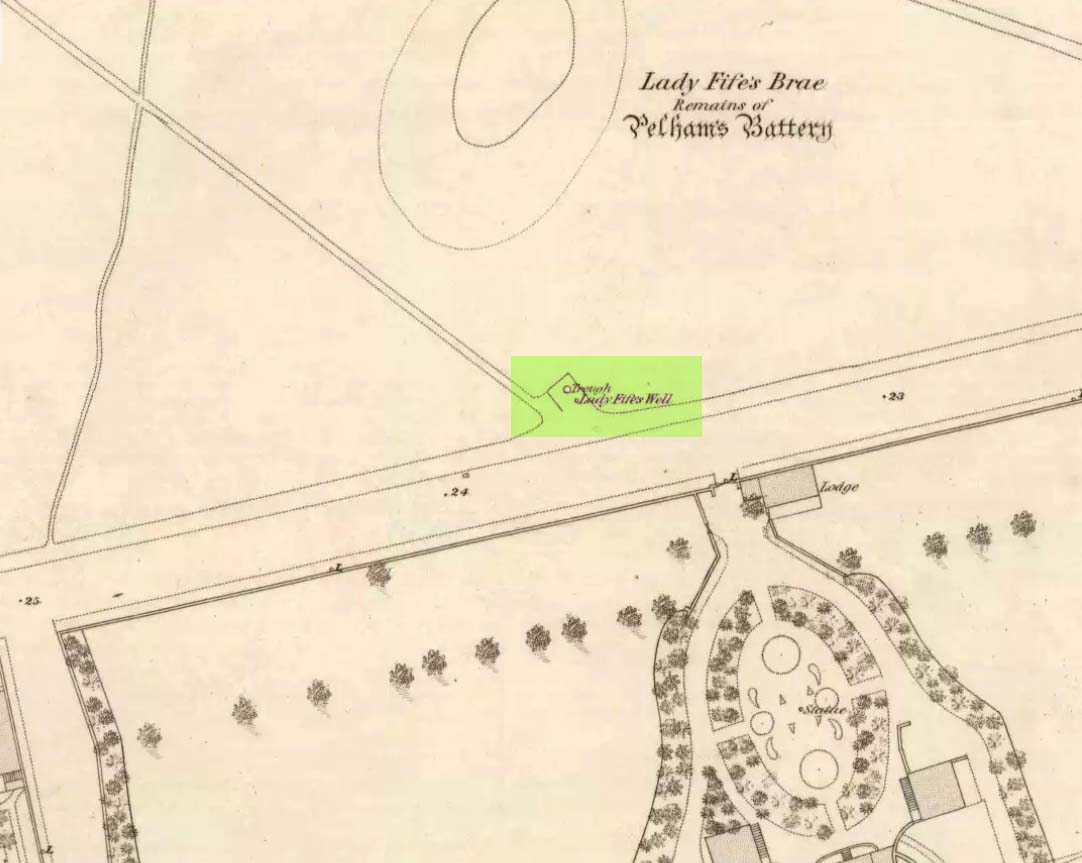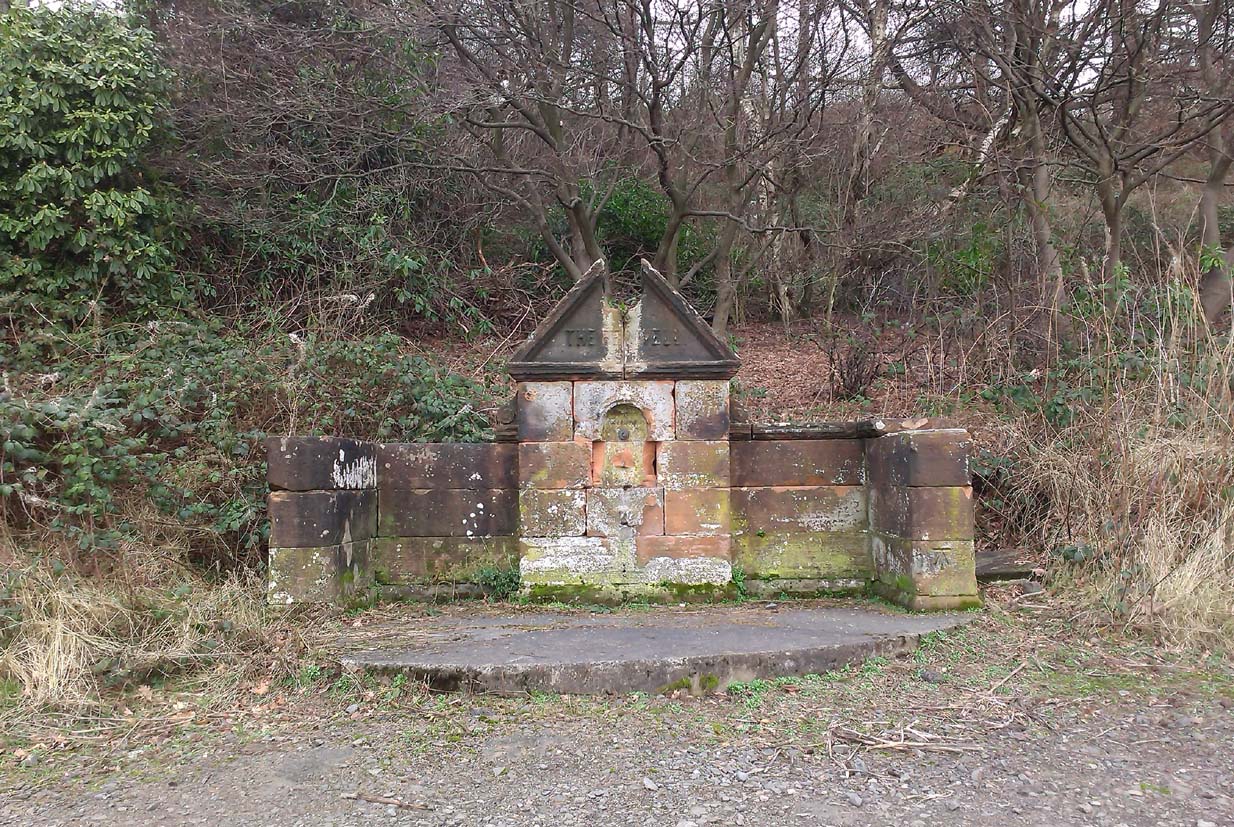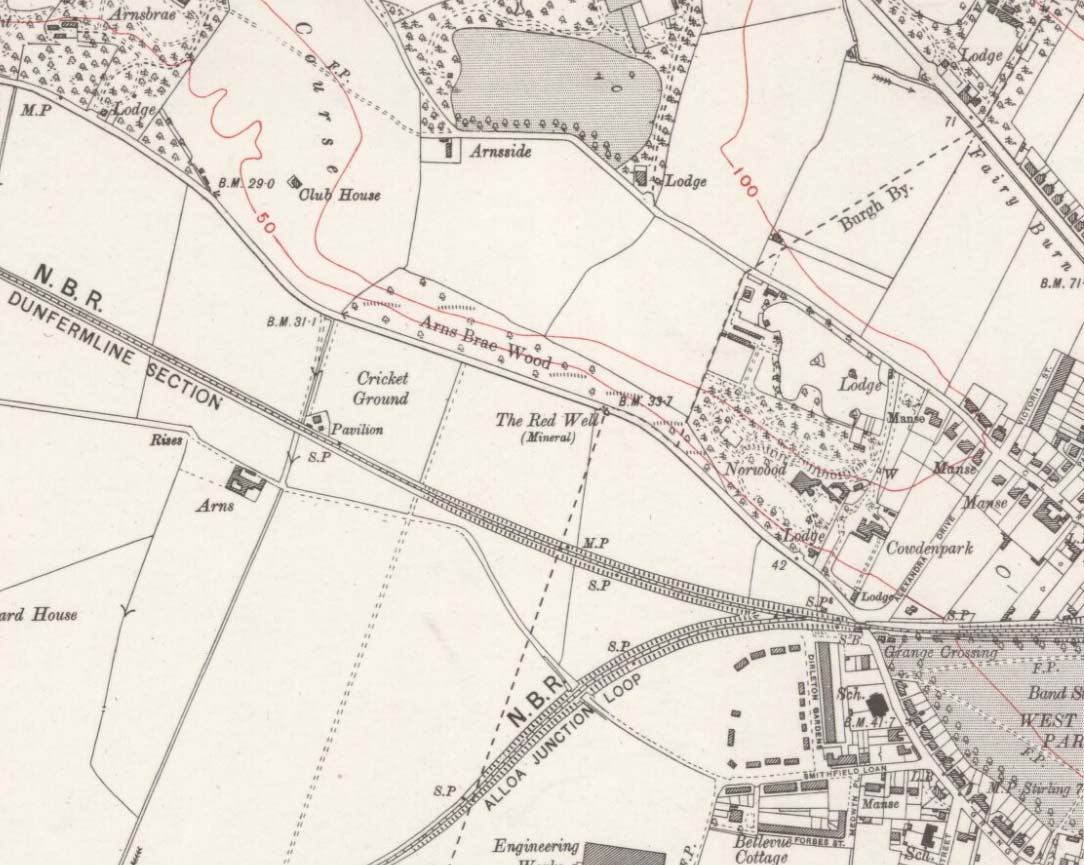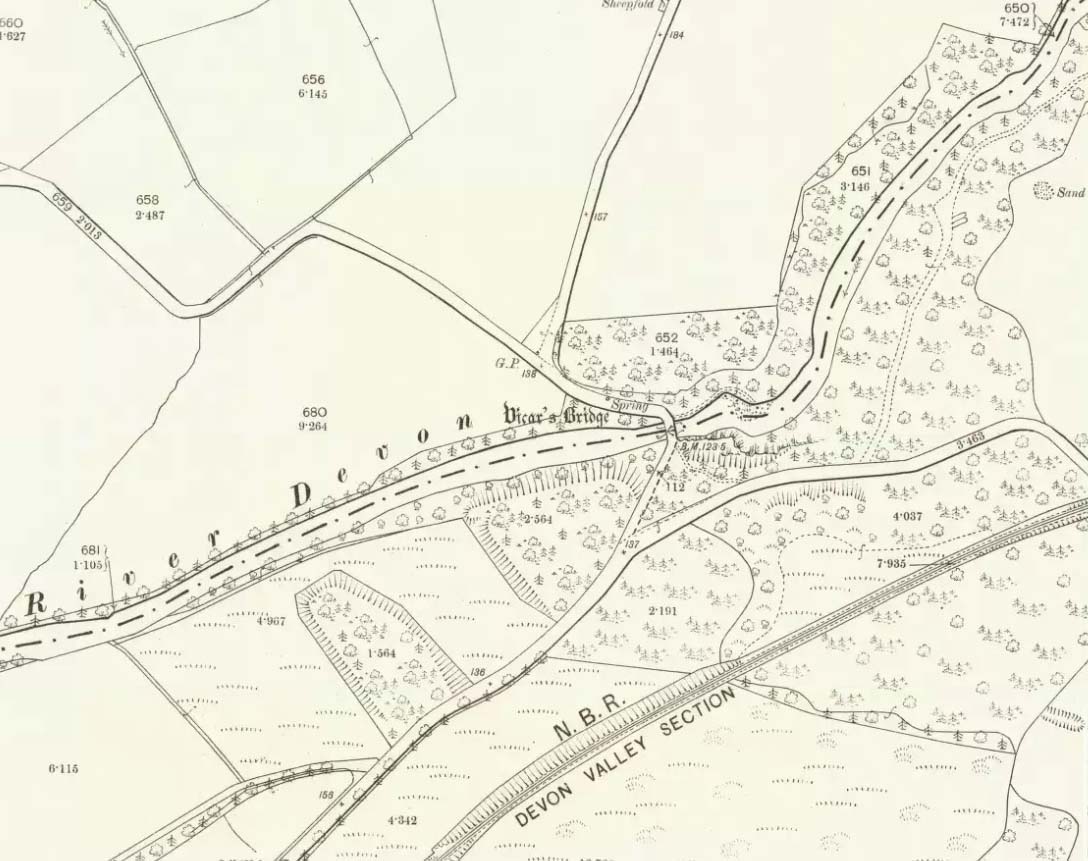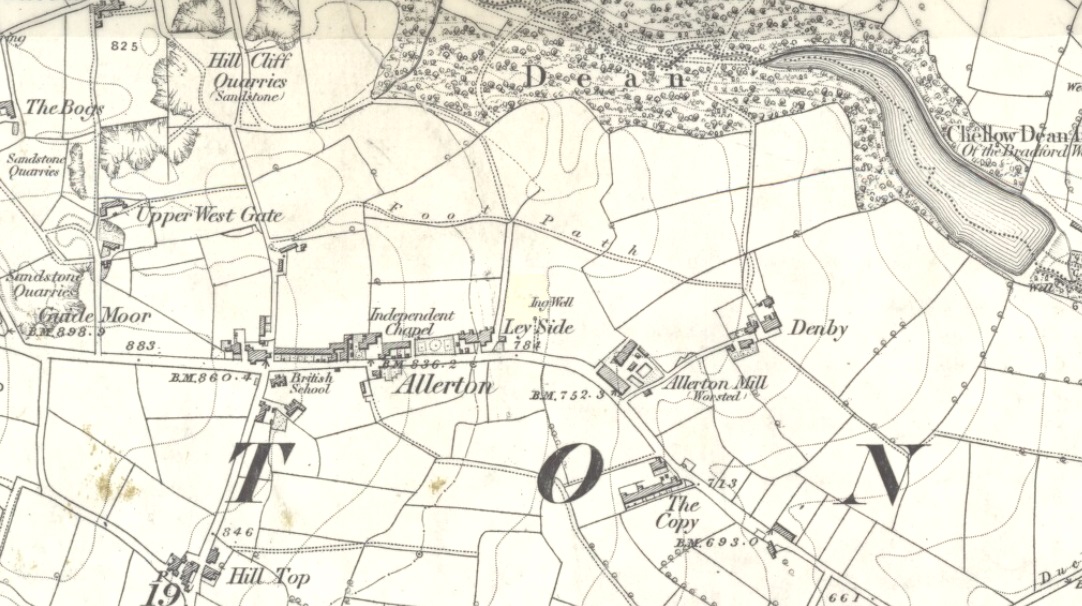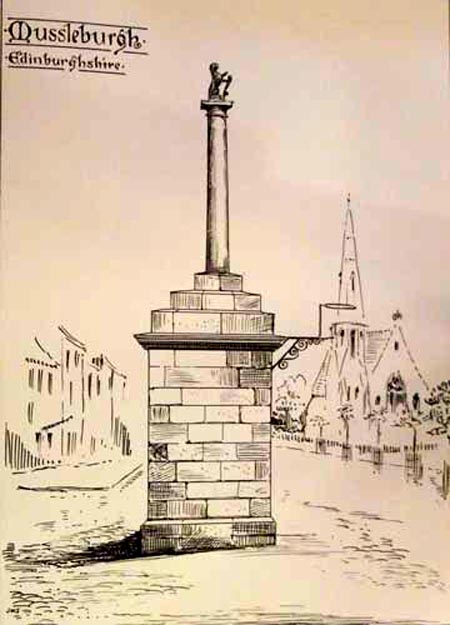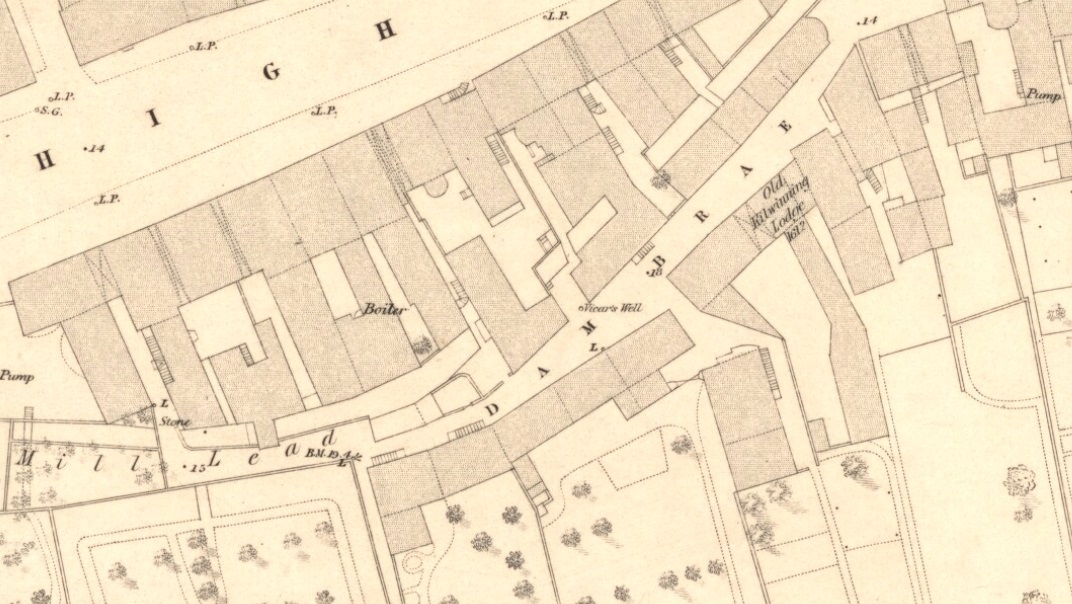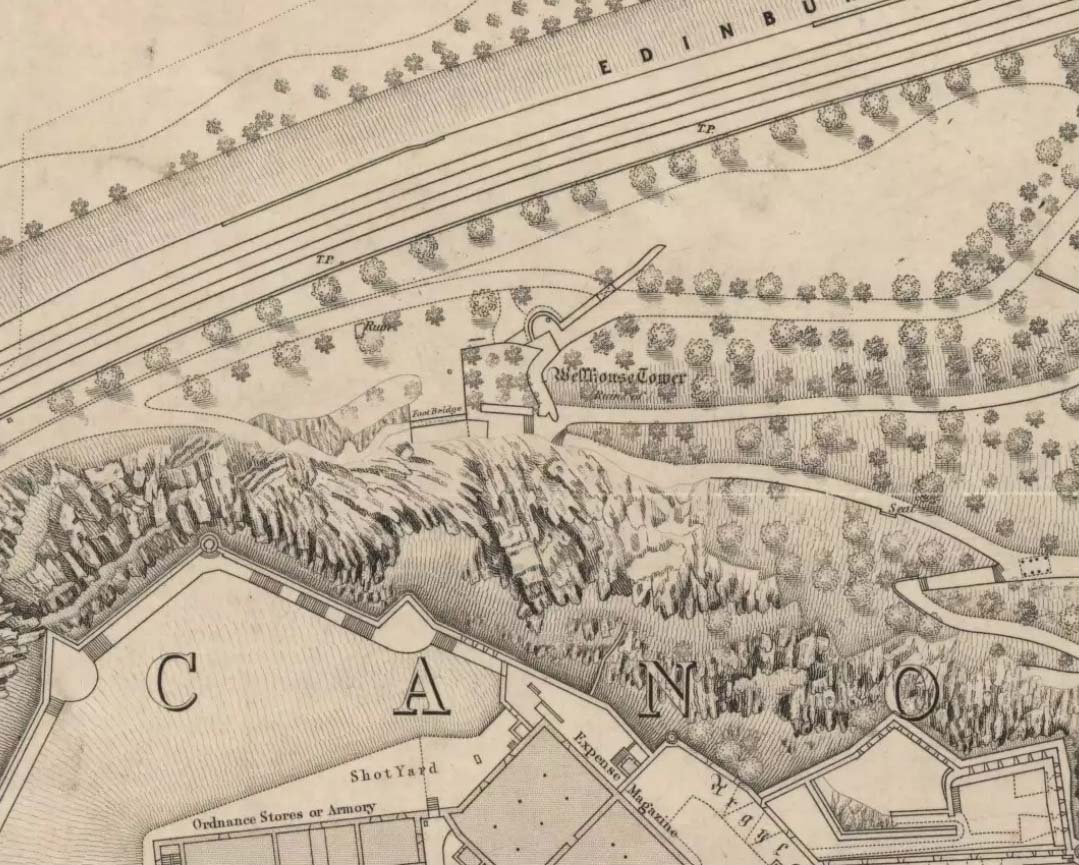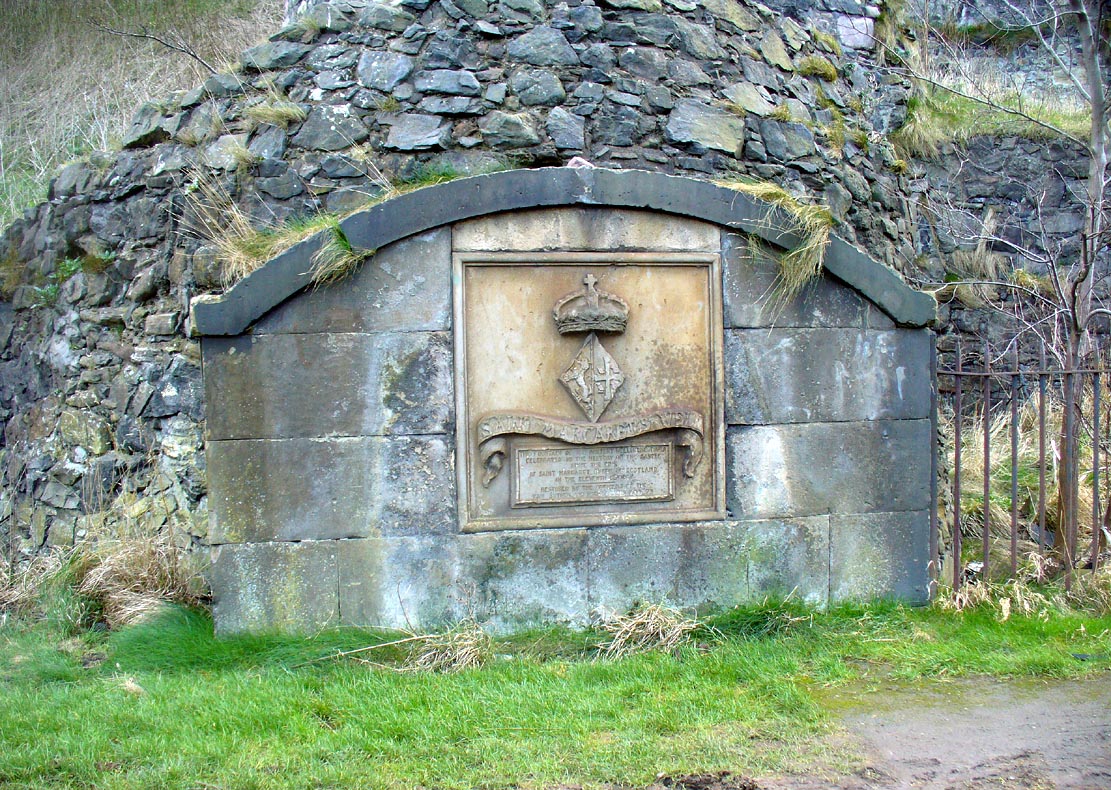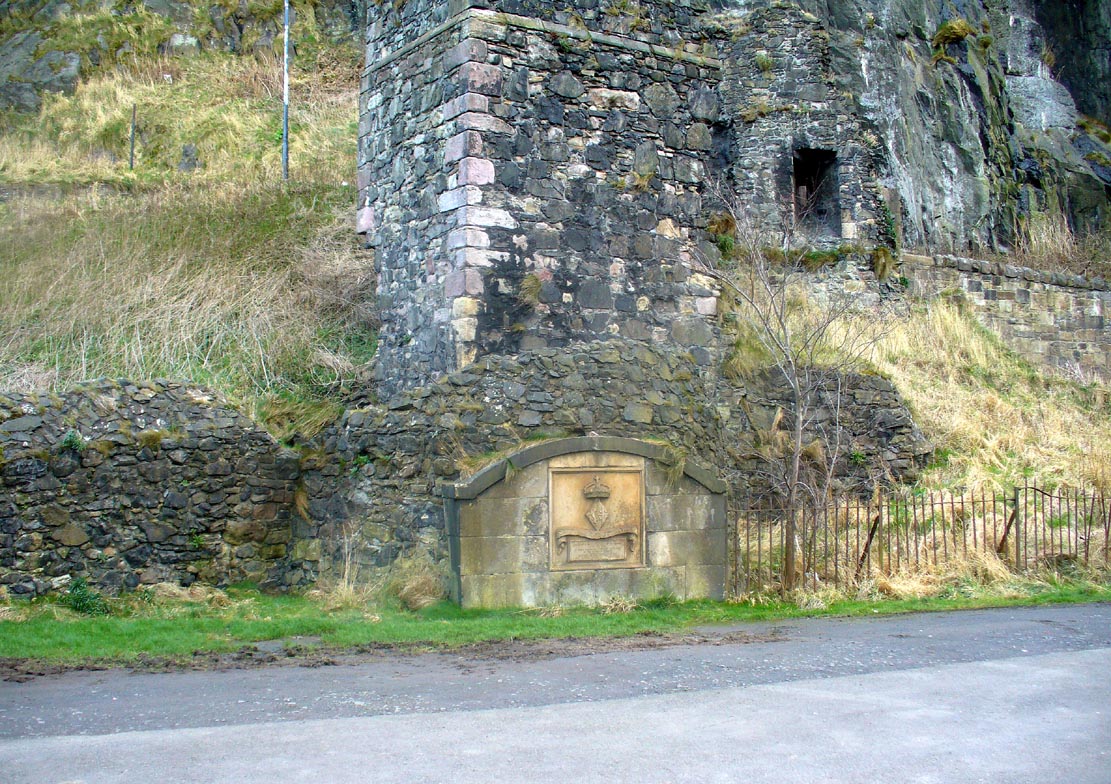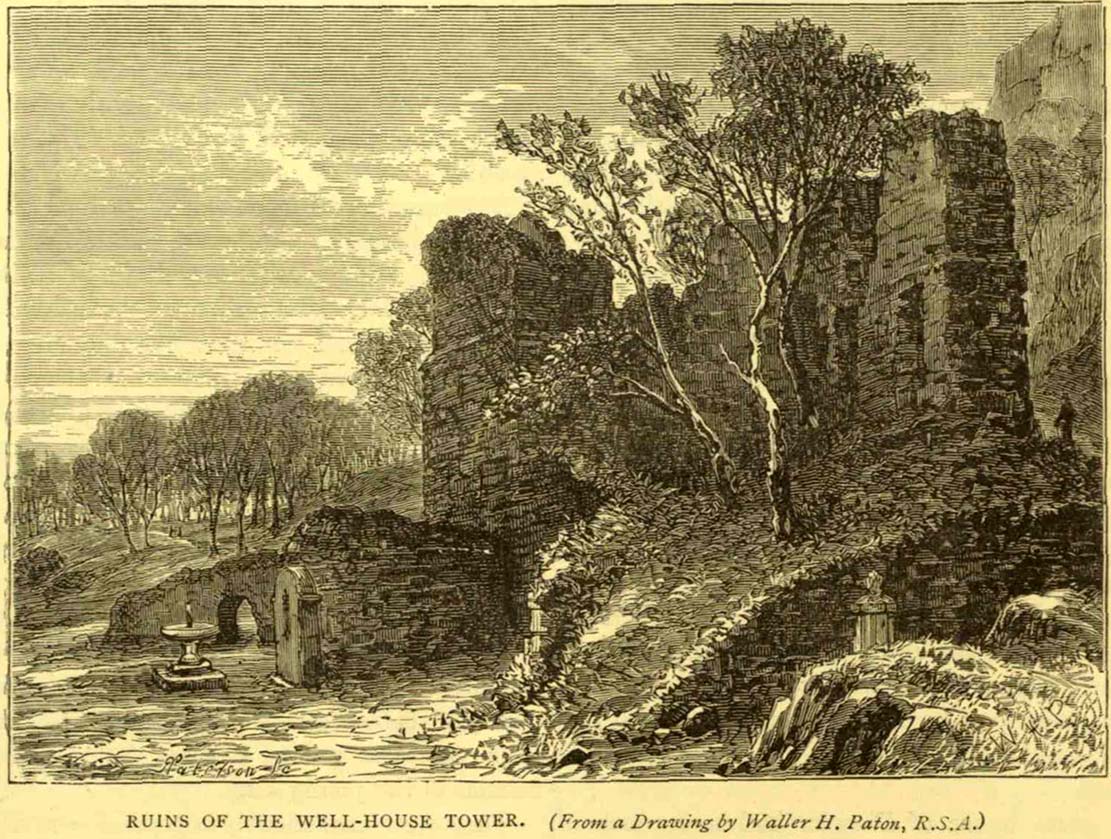Holy Well: OS Grid Reference – NT 65375 99592
Archaeology & History
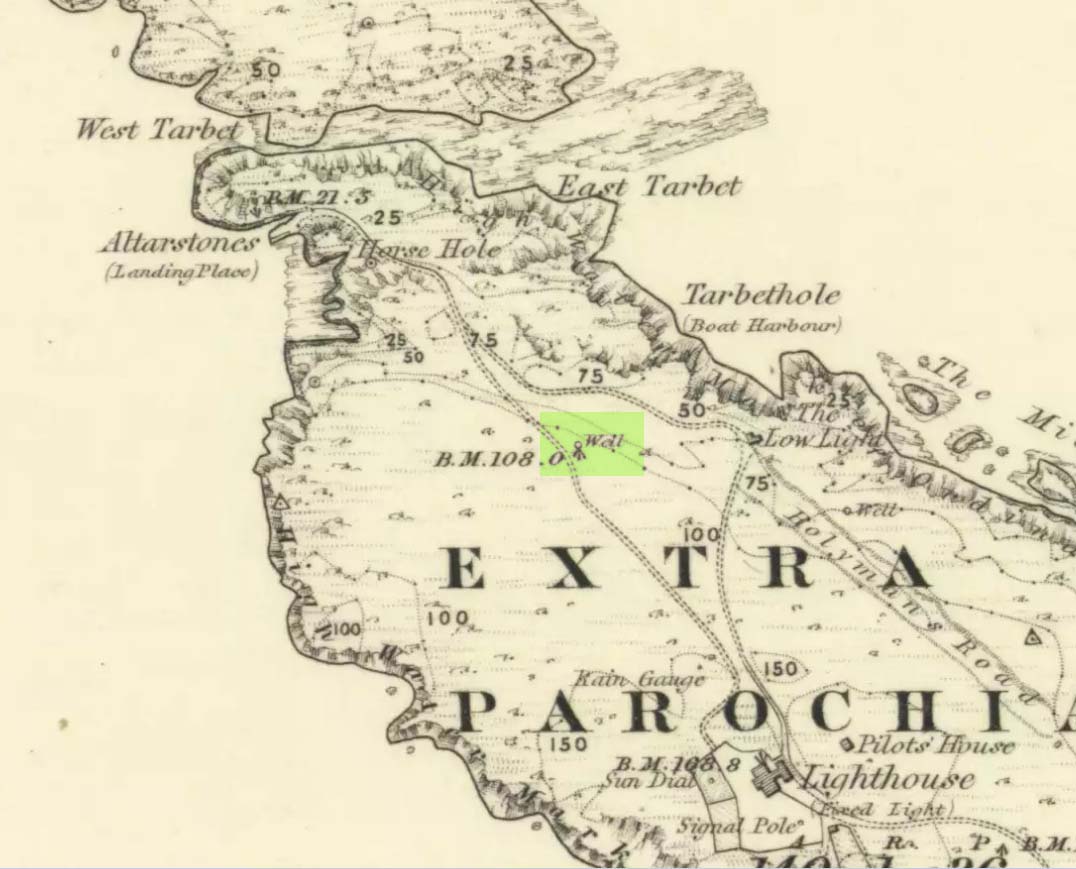
In John Dickson’s (1899) fine work on the history and antiquities of the Forth islands, he describes a number of all-but-forgotten holy and medicinal wells that could be visited in the 19th century—this one included! It was highlighted, without name, on the 1855 OS-map of the island, a short distance west of the curiously named Holyman’s Road. Aerial views of it today seem to indicate that the well was surrounded by walling, which may have been an old well-house—although the archaeological record here is silent. Mr Dickson told us:
“St. Andrew’s Well, beside the Altar Stones, contains the best water on the May and is entirely used for domestic purposes. This spring frequently dries up during the summer months and, in these circumstances, the islanders obtain a supply from Crail.”
Although it is still shown on modern large-scale OS-maps (as ‘St Andrew’s Well’), its present condition is unknown. If this has become boggy and overgrown, it is a sure case for renovation, despite its desolate geography; and especially considering that St Andrew is the patron saint of Scotland, whose festival date is November 30 (thought originally to have been Samhain, or Halloween—the old heathen New Year’s Day). If any visitor or islander could send us photos of the site, that would be awesome!
References:
- Dickson, John, Emeralds Chased in Gold; or, The Isles of the Forth, Oliphant: Edinburgh 1899.
- Eggeling, W.J., The Isle of May, Lorien 1985.
- Mackay, Æ. J.G., A History of Fife and Kinross, William Blackwood: Edinburgh 1896.
- Muir, Thomas S., The Isle of May – A Sketch, Edinburgh 1868.
- Muir, Thomas S., Ecclesiological Notes on some of the Islands of Scotland, David Douglas: Edinburgh 1883.
- Simpkins, John Ewart, Examples of Printed Folk-lore Concerning Fife, with some Notes on Clackmannan and Kinross-shires, Sidgwick & Jackson: London 1914.
- Taylor, Simon & Markus, Gilbert, The Place-Names of Fife – volume 3, Shaun Tyas: Donington 2009.
© Paul Bennett, The Northern Antiquarian
